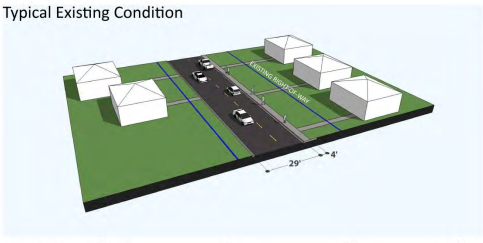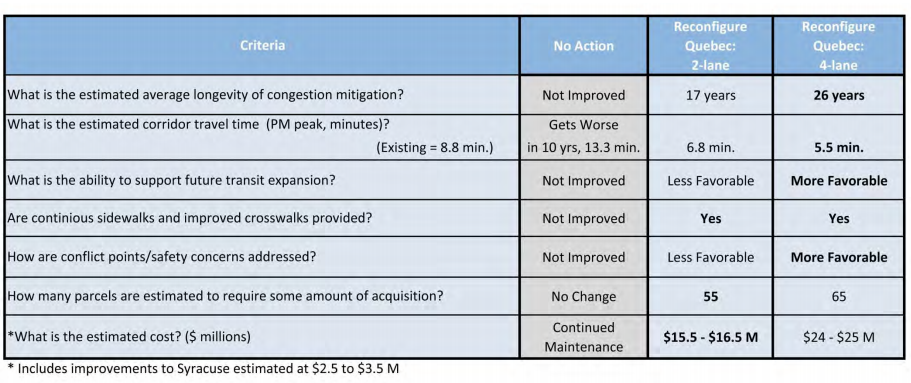DPW Insists on Making Quebec Street Wider and More Dangerous


The Department of Public Works is pushing for yet another street widening that will lead to more traffic injuries. This one is on Quebec Street between 13th and 26th avenues in Stapleton. The reason? To save drivers a few minutes during rush hour.
With the exception of a few blocks, this section of Quebec Street is currently two lanes wide. DPW has decided to turn the 1.2-mile stretch into a four-lane chasm through a residential neighborhood of northeast Denver with five schools in the vicinity. It’ll be five lanes at intersections.
On some blocks the street will go from 29 feet wide to 48 feet wide.
“Once again we’re disappointed that Denver is not following its own strategic transportation plan and instead widening roads,” said Jill Locantore of WalkDenver. “I think what we would like to see the city do is improve the safety and multimodal nature of the street without expanding the width of the street.”
DPW considered an option that would keep Quebec at two lanes, but even that called for blowing out the road to four lanes near intersections. In a design flourish that predestined the two-lane option to fail, drivers would have had to merge back to one lane after each intersection. DPW rejected the two-lane design because it is “less intuitive for vehicles/transit and pedestrians and introduces more opportunities for crashes or conflicts, which would only exacerbate congestion issues,” Principal Transportation Planner Cindy Patton said in an email.
DPW created this chart to convey its rationale for the full scope of the project, which stretches from 6th Avenue to 26th Avenue. (The city doesn’t have funding for all two miles yet.) The agency claims that a four-lane road — known in some quarters as a Four Lane Death Road — will be safer than other options, but the core rationale is that the wider street will carry more traffic:

Keep in mind this road expansion is taking place near a neighborhood that has already failed to deliver on its initial promise as a modern model of complete streets.
Of course, the city would have you believe that widening Quebec will be doing a great service for pedestrians. After all, the road expansion comes complete with sidewalks on each side! As it stands, Quebec’s sidewalks are often just thin strips of concrete — if they exist at all.
There’s more. To make room for wider roads, the city will have to buy up space from private residents. That won’t happen until after the design and environmental impact processes begin early next year. In the meantime there will be a public process, so there’s still time to influence the project.
Without changing the four-lane configuration, the Quebec project is more proof that despite all the talk from Mayor Hancock about Denver modernizing to work for walking and biking, the city remains mired in a 1950s approach to streets.


